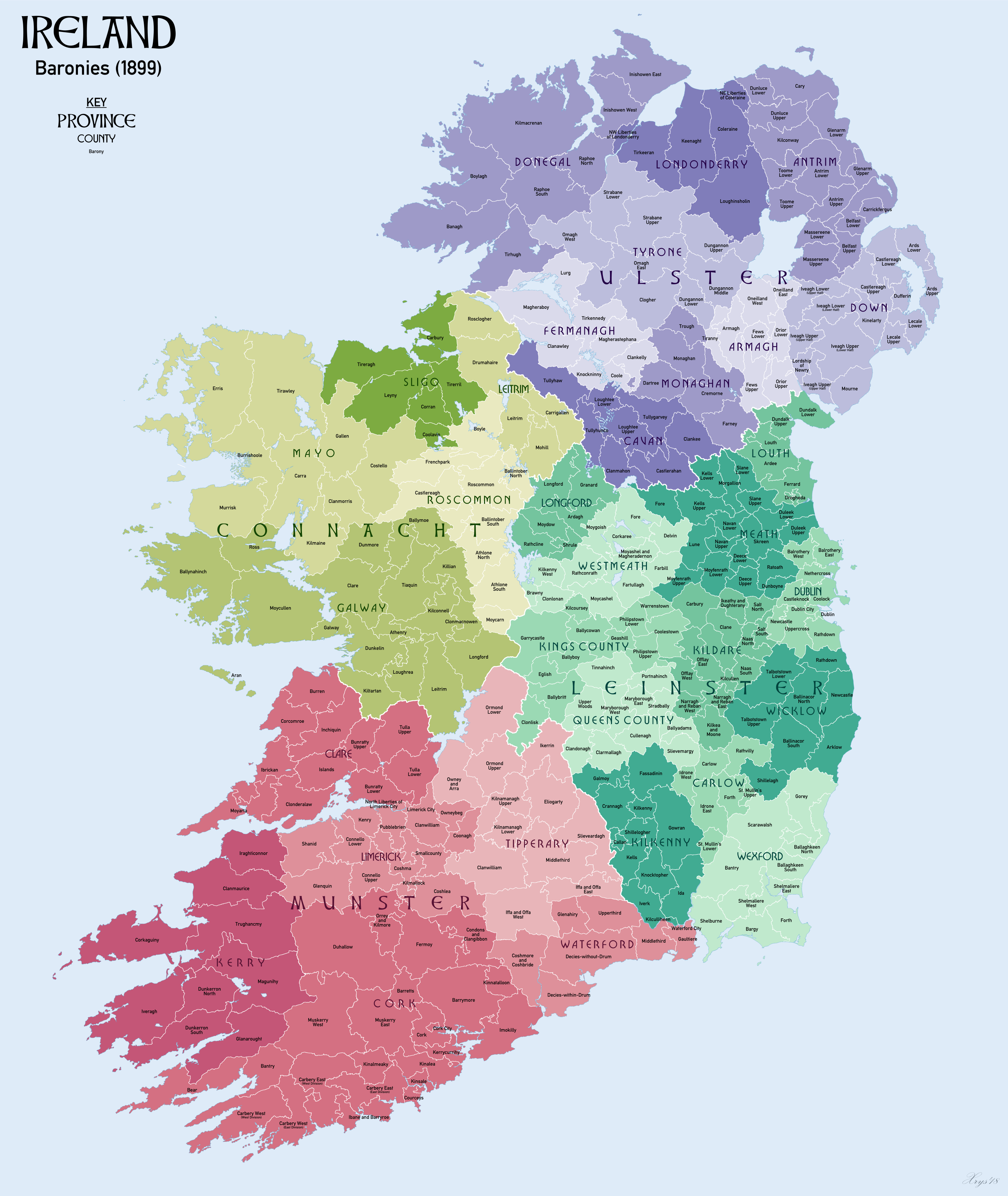|
Castletown, County Limerick
Castletown (), also known as Castletown Conyers, is an electoral division, townland and village in County Limerick, Ireland. The townland, which had a population of 143 as of the 2011 census, is in the civil parish of Corcomohide and the historical barony of Connello Upper. Evidence of ancient settlement in the area includes an ecclesiastical site (known locally as "the Abbey"), a motte, a castle and manor house. The entry for Castletown Conyers, in ''A Topographical Dictionary of Ireland Samuel Lewis (c. 1782 – 1865) was the editor and publisher of topographical dictionaries and maps of the United Kingdom of Great Britain and Ireland. The aim of the texts was to give in 'a condensed form', a faithful and impartial description ...'' (1837), associates this settlement with the Mac Einery family. Originally known as Kilmoodan, and later known as Castletown McEnery, the area became known as Castletown Conyers after the arrival of the Conyer family in the late 17th century. The ... [...More Info...] [...Related Items...] OR: [Wikipedia] [Google] [Baidu] |
Electoral Division (Ireland)
An electoral division (ED, ) is a legally defined administrative area in the Republic of Ireland, generally comprising multiple townlands, and formerly a subdivision of urban and rural districts. Until 1996, EDs were known as district electoral divisions (DEDs, ) in the 29 county council areas and wards in the five county boroughs. Until 1972, DEDs also existed in Northern Ireland. The predecessor poor law electoral divisions were introduced throughout the island of Ireland in the 1830s. The divisions were used as local-government electoral areas until 1919 in what is now the Republic and until 1972 in Northern Ireland. History until partition Electoral divisions originated under the Poor Relief (Ireland) Act 1838 as "poor law electoral divisions": electoral divisions of a poor law union (PLU) returning one or more members to the PLU's board of guardians. The boundaries of these were drawn by Poor Law Commissioners, with the intention of producing areas roughly equivalent ... [...More Info...] [...Related Items...] OR: [Wikipedia] [Google] [Baidu] |
Townland
A townland (; Ulster-Scots: ''toonlann'') is a traditional small land division used in Ireland and in the Western Isles of Scotland, typically covering . The townland system is of medieval Gaelic origin, predating the Norman invasion, and most have Irish-derived names. However, some townland names and boundaries come from Norman manors, plantation divisions, or later creations of the Ordnance Survey.Connolly, S. J., ''The Oxford Companion to Irish History, page 577. Oxford University Press, 2002. ''Maxwell, Ian, ''How to Trace Your Irish Ancestors'', page 16. howtobooks, 2009. Townlands cover the whole island of Ireland, and the total number of inhabited townlands in Ireland was 60,679 in 1911. The total number recognised by the Placenames Database of Ireland as of 2014 was 61,098, including uninhabited townlands. Etymology The term "townland" in English is derived from the Old English word ''tūn'', denoting an enclosure. The term describes the smallest unit of land di ... [...More Info...] [...Related Items...] OR: [Wikipedia] [Google] [Baidu] |
County Limerick
County Limerick () is a western Counties of Ireland, county in Republic of Ireland, Ireland. It is in the Provinces of Ireland, province of Munster and is located in the Mid-West Region, Ireland, Mid-West which comprises part of the Southern Region, Ireland, Southern Region. It is named after the city of Limerick. Limerick City and County Council is the Local government in the Republic of Ireland, local council for the county. The county's population at the 2022 census was 209,536 of whom 102,287 lived in Limerick City, the county capital. Geography Limerick borders four other counties: County Kerry, Kerry to the west, County Clare, Clare to the north, County Tipperary, Tipperary to the east, and County Cork, Cork to the south. It is the fifth-largest of Munster's six counties in size and the second-largest by population. The River Shannon flows through the city of Limerick, then continues as the Shannon Estuary until it meets the Atlantic Ocean past the far western end of the c ... [...More Info...] [...Related Items...] OR: [Wikipedia] [Google] [Baidu] |
2011 Census Of Ireland
The 2011 census of Ireland was held on Sunday, 10 April 2011. It was administered by the Central Statistics Office of Ireland and found the population to be 4,588,252 people. ''CSO 2011'' Before the census, the latest population estimate was published in September 2010 and calculated that the Irish population had been 4,470,700 in April 2010. The previous census took place five years earlier, on Sunday, 23 April 2006. 2016 census of Ireland, The subsequent census took place five years later, on 24 April 2016. The 2011 census was held during the same year as the |
Civil Parishes In Ireland
Civil parishes () are units of territory in the island of Ireland that have their origins in old Gaelic territorial divisions. They were adopted by the Anglo-Norman Lordship of Ireland and then by the Elizabethan Kingdom of Ireland, and were formalised as land divisions at the time of the Plantations of Ireland. They no longer correspond to the boundaries of Roman Catholic or Church of Ireland parishes, which are generally larger. Their use as administrative units was gradually replaced by Poor_law_union#Ireland, Poor Law Divisions in the 19th century, although they were not formally abolished. Today they are still sometimes used for legal purposes, such as to locate property in deeds of property registered between 1833 and 1946. Origins The Irish parish was based on the Gaelic territorial unit called a ''túath'' or ''Trícha cét''. Following the Norman invasion of Ireland, the Anglo-Normans, Anglo-Norman barons retained the ''tuath'', later renamed a parish or manor, as a un ... [...More Info...] [...Related Items...] OR: [Wikipedia] [Google] [Baidu] |
Barony (Ireland)
In Ireland, a barony (, plural ) is a historical subdivision of a counties of Ireland, county, analogous to the hundred (county subdivision), hundreds into which the counties of England were divided. Baronies were created during the Tudor reconquest of Ireland, replacing the earlier cantreds formed after the original Norman invasion of Ireland, Norman invasion.Mac Cotter 2005, pp.327–330 Some early baronies were later subdivided into half baronies with the same standing as full baronies. Baronies were mainly cadastre, cadastral rather than administrative units. They acquired modest local taxation and spending functions in the 19th century before being superseded by the Local Government (Ireland) Act 1898. Subsequent adjustments of county boundaries mean that some baronies now straddle two counties. The final catalogue of baronies numbered 331, with an average area of ; each county was divided, on average, into 10 or 11 baronies. Creation The island of Ireland was "shired" i ... [...More Info...] [...Related Items...] OR: [Wikipedia] [Google] [Baidu] |
Connello Upper
Connello Upper (; sometimes ''Upper Connello'', and occasionally spelled ''Conello'') is a historical barony in southern County Limerick, Ireland. Baronies were mainly cadastral rather than administrative units. They acquired modest local taxation and spending functions in the 19th century before being superseded by the Local Government (Ireland) Act 1898. History Originally western Limerick was a single vast barony known as Connello. It was divided into Lower (northern) and Upper (southern) halves some time before 1821, and 1841 the western part of Connello Upper was made a separate barony, Glenquin, while the western half of Connello Lower became the barony of Shanid. The Connello Upper region was the anciently the possession of the Uí Chonaill Gabra, part of the Uí Fidgeinti; the name refers to an ancestor, Conall Gabra, "Conall of the White Horse." Hy Cnocnuil Gabhra was the name of the Eóganachta cantred. The Ó Coileáin (Collins or Cullane) were lords of Connel ... [...More Info...] [...Related Items...] OR: [Wikipedia] [Google] [Baidu] |
A Topographical Dictionary Of Ireland
Samuel Lewis (c. 1782 – 1865) was the editor and publisher of topographical dictionaries and maps of the United Kingdom of Great Britain and Ireland. The aim of the texts was to give in 'a condensed form', a faithful and impartial description of each place. The firm of Samuel Lewis and Co. was based in London. Samuel Lewis the elder died in 1865. His son of the same name predeceased him in 1862. ''A Topographical Dictionary of England'' This work contains every fact of importance tending to illustrate the local history of England. Arranged alphabetically by place (village, parish, town, etc.), it provides a faithful description of all English localities as they existed at the time of first publication (1831), showing exactly where a particular civil parish was located in relation to the nearest town or towns, the barony, county, and province in which it was situated, its principal landowners, the diocese in which it was situated, and—of novel importance—the Roman Catholic ... [...More Info...] [...Related Items...] OR: [Wikipedia] [Google] [Baidu] |
Towns And Villages In County Limerick
A town is a type of a human settlement, generally larger than a village but smaller than a city. The criteria for distinguishing a town vary globally, often depending on factors such as population size, economic character, administrative status, or historical significance. In some regions, towns are formally defined by legal charters or government designations, while in others, the term is used informally. Towns typically feature centralized services, infrastructure, and governance, such as municipal authorities, and serve as hubs for commerce, education, and cultural activities within their regions. The concept of a town varies culturally and legally. For example, in the United Kingdom, a town may historically derive its status from a market town designation or City status in the United Kingdom, royal charter, while in the United States, the term is often loosely applied to incorporated municipality, municipalities. In some countries, such as Australia and Canada, distinction ... [...More Info...] [...Related Items...] OR: [Wikipedia] [Google] [Baidu] |




